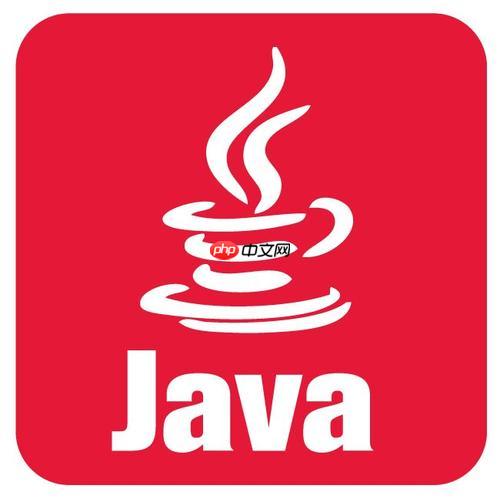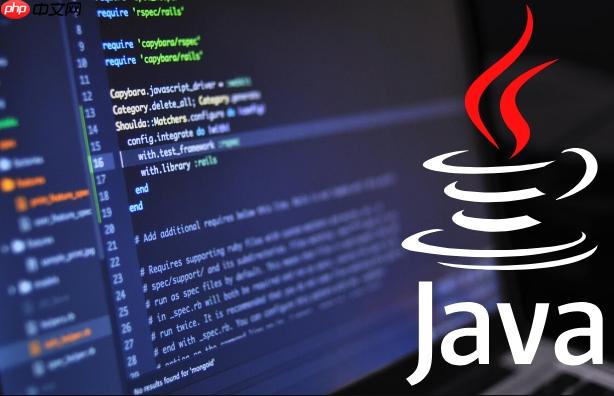java 应用中读取 properties 文件的常见方法是使用 properties 类结合 fileinputstream 加载配置,1. 创建 properties 对象;2. 使用 fileinputstream 读取配置文件;3. 调用 load() 方法加载文件内容;4. 通过 getproperty() 方法获取键值对;5. 捕获并处理 ioexception 异常。若配置文件不存在,fileinputstream 会抛出 filenotfoundexception,可捕获该异常并设置默认值以确保程序继续运行。除了 fileinputstream,还可使用 filereader 或 classloader.getresourceasstream() 加载配置文件,尤其适用于 classpath 下的资源。在 spring boot 中,可通过 application.properties 配合 @value 注解实现自动配置注入,并支持多环境 profiles 管理。动态修改 properties 文件可通过 setproperty() 和 store() 方法实现,但需注意并发安全问题,推荐将配置存储于数据库并通过 api 修改以提升灵活性与安全性。

直接读取 Properties 文件,提供配置信息,让 Java 应用更灵活。

Java 中使用 Properties 类读取配置文件是相当常见的操作。它允许我们将配置信息从代码中分离出来,方便修改和维护。核心步骤就是创建 Properties 对象,加载配置文件,然后通过键值对的方式获取配置信息。

首先,你需要一个配置文件,通常以 .properties 为后缀。例如,config.properties,内容可能如下:
立即学习“Java免费学习笔记(深入)”;

database.url=jdbc:mysql://localhost:3306/mydatabase database.username=myuser database.password=mypassword
接下来,在 Java 代码中,你可以这样读取:
import java.io.FileInputStream;
import java.io.IOException;
import java.util.Properties;
public class ConfigReader {
public static void main(String[] args) {
Properties prop = new Properties();
String fileName = "config.properties";
try (FileInputStream fis = new FileInputStream(fileName)) {
prop.load(fis);
String dbUrl = prop.getProperty("database.url");
String dbUsername = prop.getProperty("database.username");
String dbPassword = prop.getProperty("database.password");
System.out.println("Database URL: " + dbUrl);
System.out.println("Database Username: " + dbUsername);
System.out.println("Database Password: " + dbPassword);
} catch (IOException e) {
System.err.println("Error reading properties file: " + e.getMessage());
}
}
}这段代码的关键在于 FileInputStream 用于读取文件,prop.load(fis) 将文件内容加载到 Properties 对象中,然后使用 prop.getProperty() 方法根据键获取值。 注意,你需要处理 IOException 异常。
当配置文件不存在时,FileInputStream 会抛出 FileNotFoundException,这是 IOException 的子类。你可以捕获这个异常,并提供一个默认配置或者提示用户创建配置文件。例如:
try (FileInputStream fis = new FileInputStream(fileName)) {
prop.load(fis);
} catch (java.io.FileNotFoundException e) {
System.err.println("Config file not found! Using default values.");
// 设置默认值,或者退出程序
prop.setProperty("database.url", "default_url");
prop.setProperty("database.username", "default_user");
prop.setProperty("database.password", "default_password");
} catch (IOException e) {
System.err.println("Error reading properties file: " + e.getMessage());
}这样,即使配置文件缺失,程序也能继续运行,虽然使用的是默认值。
当然有。Properties 类还提供了 load(Reader reader) 方法,可以使用 FileReader 或 BufferedReader 来读取文件。此外,如果配置文件位于 classpath 下,可以使用 ClassLoader.getResourceAsStream() 方法获取输入流,再加载到 Properties 对象中。这种方式更适合于将配置文件打包到 JAR 文件中。
例如:
try (InputStream is = getClass().getClassLoader().getResourceAsStream("config.properties")) {
if (is != null) {
prop.load(is);
} else {
System.err.println("Config file not found in classpath!");
}
} catch (IOException e) {
System.err.println("Error reading properties file: " + e.getMessage());
}使用 ClassLoader 加载资源时,路径是相对于 classpath 的根目录。
Spring Boot 提供了更便捷的方式来处理配置文件。你可以将配置信息放在 application.properties 或 application.yml 文件中,Spring Boot 会自动加载这些配置。
例如,在 application.properties 中:
my.custom.property=some_value
然后在 Java 代码中,你可以使用 @Value 注解来注入配置值:
import org.springframework.beans.factory.annotation.Value;
import org.springframework.stereotype.Component;
@Component
public class MyComponent {
@Value("${my.custom.property}")
private String myCustomProperty;
public void printProperty() {
System.out.println("My custom property: " + myCustomProperty);
}
}Spring Boot 会自动将 my.custom.property 的值注入到 myCustomProperty 字段中。这种方式更加简洁,也更容易管理配置。Spring Boot 还支持 profiles,可以根据不同的环境加载不同的配置文件。
虽然 Properties 类提供了 setProperty() 方法来设置属性,但直接修改文件通常不推荐。更好的做法是将配置信息存储在数据库或其他持久化存储中,然后通过管理界面或 API 来修改配置。如果确实需要修改文件,需要注意线程安全和并发访问的问题。可以使用 FileOutputStream 和 prop.store() 方法将修改后的 Properties 对象写回文件。
例如:
try (FileOutputStream fos = new FileOutputStream(fileName)) {
prop.setProperty("new.property", "new_value");
prop.store(fos, "Updated properties file");
} catch (IOException e) {
System.err.println("Error writing properties file: " + e.getMessage());
}但请务必谨慎操作,避免破坏配置文件。
以上就是Java中如何用Properties读取配置文件的详细内容,更多请关注php中文网其它相关文章!

每个人都需要一台速度更快、更稳定的 PC。随着时间的推移,垃圾文件、旧注册表数据和不必要的后台进程会占用资源并降低性能。幸运的是,许多工具可以让 Windows 保持平稳运行。

Copyright 2014-2025 https://www.php.cn/ All Rights Reserved | php.cn | 湘ICP备2023035733号